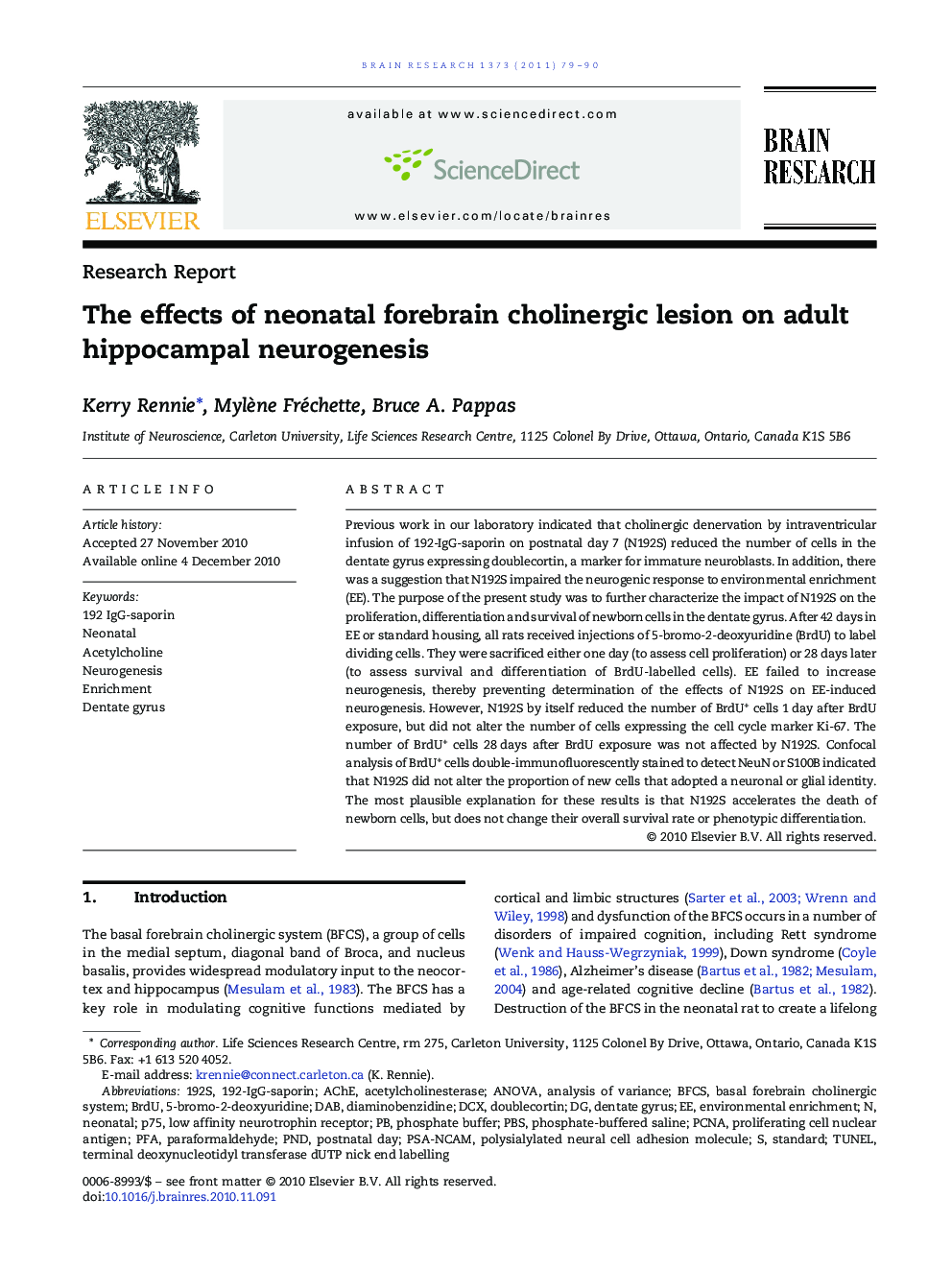| Article ID | Journal | Published Year | Pages | File Type |
|---|---|---|---|---|
| 6265207 | Brain Research | 2011 | 12 Pages |
Previous work in our laboratory indicated that cholinergic denervation by intraventricular infusion of 192-IgG-saporin on postnatal day 7 (N192S) reduced the number of cells in the dentate gyrus expressing doublecortin, a marker for immature neuroblasts. In addition, there was a suggestion that N192S impaired the neurogenic response to environmental enrichment (EE). The purpose of the present study was to further characterize the impact of N192S on the proliferation, differentiation and survival of newborn cells in the dentate gyrus. After 42Â days in EE or standard housing, all rats received injections of 5-bromo-2-deoxyuridine (BrdU) to label dividing cells. They were sacrificed either one day (to assess cell proliferation) or 28Â days later (to assess survival and differentiation of BrdU-labelled cells). EE failed to increase neurogenesis, thereby preventing determination of the effects of N192S on EE-induced neurogenesis. However, N192S by itself reduced the number of BrdU+ cells 1Â day after BrdU exposure, but did not alter the number of cells expressing the cell cycle marker Ki-67. The number of BrdU+ cells 28Â days after BrdU exposure was not affected by N192S. Confocal analysis of BrdU+ cells double-immunofluorescently stained to detect NeuN or S100B indicated that N192S did not alter the proportion of new cells that adopted a neuronal or glial identity. The most plausible explanation for these results is that N192S accelerates the death of newborn cells, but does not change their overall survival rate or phenotypic differentiation.
Research HighlightsâºNeonatal cholinergic lesion reduces the number of immature neurons in dentate gyrus. âºProliferation, differentiation and long-term survival are unaffected by the lesion. âºDorsal and ventral dentate gyri are differentially sensitive to cholinergic lesion.
